Celebrating Water // Bayou Festivals

by Jenna Orgeron, special sections editor Locals have not only formed careers and communities based on the numerous waterways of South Louisiana, but they have crafted entire festivals to celebrate the environment that supports their way of life. Festivals and celebrations like Paddle Bayou Lafourche, Tarpon Rodeo, Alligator Festival, Voice of the Wetlands and Thibodeauxville celebrate the southern waterways of Louisiana and help raise money to preserve and maintain the flowing foundation of the community. According to Mayor David Camardelle, an event like the International Grand Isle Tarpon Rodeo brings around 12,000 tourists to the small town with a usual population of about 3,000. Camardelle says people travel from different states and countries to go out on the water, fish, relax, and enjoy “Sportsman’s Paradise.” Other festivals, like Voice of the Wetlands, encourage attendees to camp out in Louisiana’s wetlands to enjoy performances by local musicians while eating famous Cajun cuisine. Jana Anselmi, a yearly VOW attendee, says that the festival is one of her favorite events of the year. “It’s a free festival with great music and phenomenal food! The only catch is paying to eat, but I don’t mind giving my money to help my hometown,” she says. Another celebration, the Thibodeauxville Fall Festival, is held in the downtown streets of Thibodaux, a small city located along Bayou Lafourche. The day-long festival includes live music, a car show, and the beloved duck race in the bayou. “Thibodeauxville is a chance for local businesses and the community to join together and celebrate all of the things that make the city what it is, and that includes the bayou that runs through it,” says Derek Landry, owner of Last Call, one of the bars in Downtown Thibodaux. Previous Next
Talk Cajun to Me // “Water Speaking”
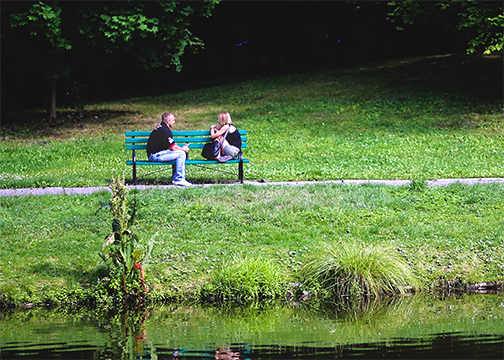
by Jenna Orgeron, special sections editor Some southern Louisiana natives still speak in their own language, which evolved from a combination of cultures influenced by their ancestors who first settled along the waterways in the bayou region. Edward Ledet, a fluent Cajun French speaker who was born and raised on Bayou Lafourche, says a large group of French immigrants, known as Acadians, traveled by water and boat from Northern Canada to the delta of the Mississippi River where they made a living from the water and wetlands of South Louisiana. Other nationalities populated the region as well, like Haitian, Vietnamese, and Native American. As a result of people from these different backgrounds migrating to this region to start a new life in the southern swamps and bayous, Cajun culture was born. These people who spoke different languages needed to work and communicate with one another on the water to make a living, so they named the waterways and created common water-related terms that helped them understand each other and the environment they were inhabiting. Linda Lafont, another bayou native and former French teacher of 33 years, recounts some of her earliest school memories of being forced to repeat sentences in English until she got them grammatically correct. “It would take me a few tries because I was literally translating every single word, from French to English,” Lafont says since she only spoke French with her relatives and neighbors and they never corrected her grammar. The dominant influence of French is because of the dominant influence of water. According to Lafont, “the French-speaking people who built business and homes along these waterways maintained their own little community in this region to keep their heritage alive.” Caitlin Orgeron, currently French teacher in the bayou region and Lafont’s former student, says “the combination of various languages and improper translation without grammatical correction” is what formed Cajun French. “But,” Orgeron continues, “the bayous, the communities that surround them and the deep appreciation for tradition is why it’s still spoken today.”
Let Me “Bayou” a Drink // Bar Hopping
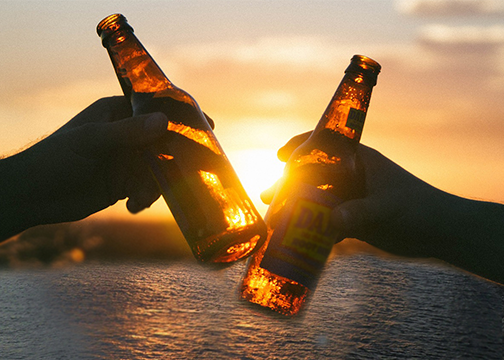
by Jenna Orgeron, special sections editor Boat bar-hopping is just one of the unique activities that bayou region residents have discovered and mastered based on their surrounding environment. Seth Cheramie, a 24-year-old resident who was born and raised on the bayou said this is his favorite pastime on the weekends. “It’s something we’ve done since I was a kid and I’ve never seen it anywhere else,” he says. “There’s no place like the bayou.” Along some of the bayous near Gramercy, Louisiana, locals have established restaurants and bars, like Lagniappe’s and the Tiger Hut. These restaurants and bars provide a place to dock a watercraft while boaters can enjoy a bite to eat and a little something to drink. And of course, in Louisiana, that usually means an alcoholic drink. There may be questions as to how this is activity is even allowed, but partaking in the fun is completely legal according to Livingston Parish Officer Mark Erwin. “As long as participants have a designated sober driver for the watercraft and follow the laws enforced by the local water patrol, they’re good to go!” he says. According to the Livingston Parish Water Patrol, there are three main laws enforced by officers. All persons are wearing a properly fitting life jacket, with all belts buckled and zippers zipped (if any) Proper operation of watercraft For boats: a sober driver who is of age, has a certified Louisiana boating license For jet skis: a sober driver who is of age, has a certified Louisiana boating license, wearing operating lanyard securely on the wrist Up-to-date state-mandated motorboat registration sticker displayed on watercraft As for personal safety and responsibility of participants, boat bar-hopping is no different than its dry land equivalent. Any person who joins the party must be of age, drink responsibly and agree not operate a watercraft under the influence of alcohol. Whether on the road or on water, a DD is always a party essential, Erwin says. Boat bar-hopping is not a hobby that can be executed just anywhere. These Louisiana bayous serve as the foundation for numerous communities throughout the state. Cheramie, who boat bar-hops almost every weekend, says, “It’s amazing how something as simple as water connects everyone around here.”
Spicin’ It Up // Cajun Style
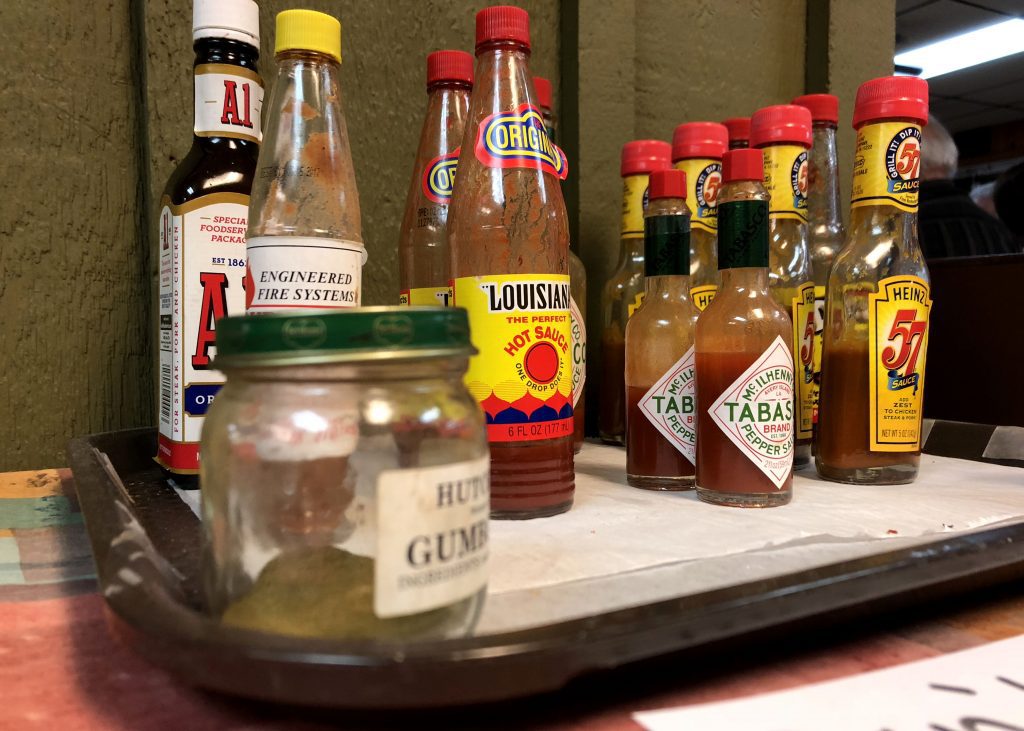
by Alondra Medrano, special sections editor The use of spices in Cajun cooking is a staple in South Louisiana cuisine. For years, seasoning has been used on traditional red beans, gumbo, and étouffée to add a unique Bayou flare. Cajun or Creole seasoning is made up of salt and pepper with a variety of spices like cayenne or garlic powder, says John Folse Culinary Institute graduate Kamal Jones. “As we season or cook our meals in class, we use separate seasonings that essentially make up what many consider to be Cajun spice,” Jones says. “The blends of certain seasoning are what give our food down that special kick, I would tell you my secret blend but you’ll just have to wait to see it in stores one day.” Cajun or Creole seasoning is made up of salt and pepper with a combination of additional spices, with cayenne and garlic powder being the most common. Local Louisiana grocery stores carry over 50 brands of Cajun spices making the flavor possibilities endless. Louisiana-style spice blends have gained popularity, reaching grocery stores all around the country. In 2010, spices exported from Louisiana accounted for a $12 million industry, according to the World Trade Center New Orleans data. The market for these products has continued to grow over the years with the addition of new spice blends and brands. 985 Products is a new player in the spice game, releasing their Cajun All Spice and signature hot sauce this year. “This blend is a true representation of what my family cooked with and the spices I use to this day,” says John Kerry, co-owner of 985 Products. “This is the most competitive industry, and that is why we have spent years perfecting our ideal seasoning.” The 985 Products are named after the 985 area code that covers the 11 parishes in South Louisiana’s Bayou region. The products can be found in 13 retail locations in Louisiana and surrounding states and more being added later this year. “It’s funny because we released our products in the 985 area after all other locations,” says Brandon Halfen, 985 Products president. “We wanted to create a buzz and then release it for people here to feel a sense of pride.” https://youtu.be/3ulWqL-U5WI
Caffeinated Livin’ // Bayou Brewing
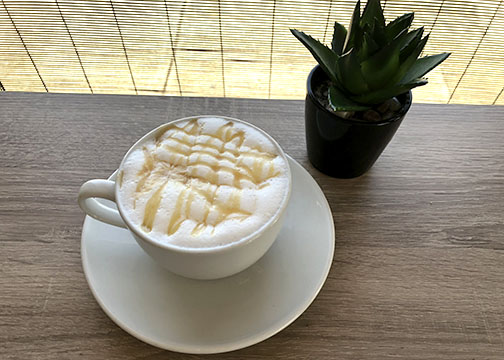
by Alondra Medrano, special sections editor
South Louisiana’s Snowball // A Frozen Delicacy
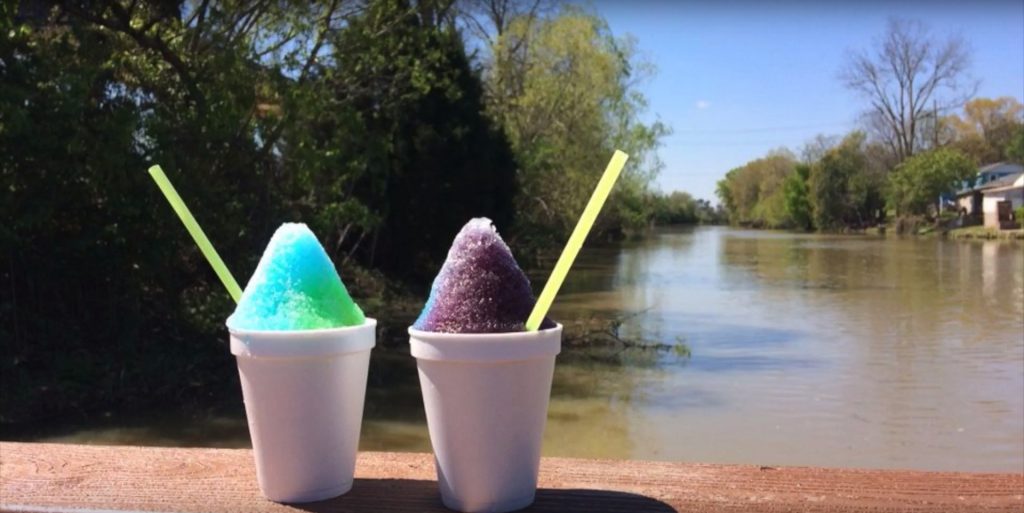
by Alondra Medrano, special sections editor The sun beats down on South Louisiana, the sweltering heat and humidity smothering the summer fun, yet that’s not enough to keep the spirits down. Instead Cajuns do like most things and replace the agony by consuming food. The particular cure for summers on the bayou are the combination of two ingredients: ice and sugar. Don’t let this simple recipe fool you, snowball lovers are crazy for this icy and refreshing treat. First, it’s always called a snowball-not a snow cone or shaved ice. The ice is fluffier and better absorbs the flavors rather than trickling to the bottom of the cup. Before the 1930’s, the ice was shaved by hand which resulted in a chunkier texture. It was in 1933 that Ernest Hansen invented a ice-shaving machine that created the consistency of snow, coining the term “sno-ball”. Ernst opened his first snowball stand in New Orleans, Hansen’s Sno-Bliz, which still runs today. Next is picking the flavor, often referred to as “juice.” With options from strawberry to crawfish flavored snowballs, the possibilities are endless. Over the years, snowball stands have provided the bayou area with its fair share of icy goodness. While some businesses have been around longer than others, snowball stands pride themselves on their specialty snowballs. Curtis’ Snowballs has been serving the Thibodaux area for 39 years and continues to create signature flavors from scratch. “The flavor is the most important factor” says employee Amy Rivera. Many of the signature flavors are created daily with real cane sugar and secret flavor combinations. Curtis’ is famous for their Snickers bar inspired snowball that includes chocolate flavoring, peanuts, and warm fudge. So what is the secret to the perfect snowball? The answer to that is different for all snowball stands. “It may sound silly, but there is almost a science behind the creation of a snowball,” says the owner of Sno Shack Snowballs, Danielle Dufrene. The Sno Shack offers over 50 flavors with the addition of their very own concoctions like their specialty snowball, “Glow Worm.” Its name and green color may initially seem odd, but its popularity amongst customers says otherwise. “Seeing our customers walk away happy with our snowballs is what makes me love my job,” says Danielle. “My kids love helping me at the stand. They see their school friends and it makes it fun for all of us.” As for the best-selling flavor, both locations agreed that Strawberry takes the prize. But whatever your flavor of choice is, treat yourself to some toppings like condensed milk, gummy worms or maybe some extra juice. After all, it is your own creation. https://youtu.be/-fp5tI80wwo
Dramatic Works // Queen Sugar & St. Joseph Plantation
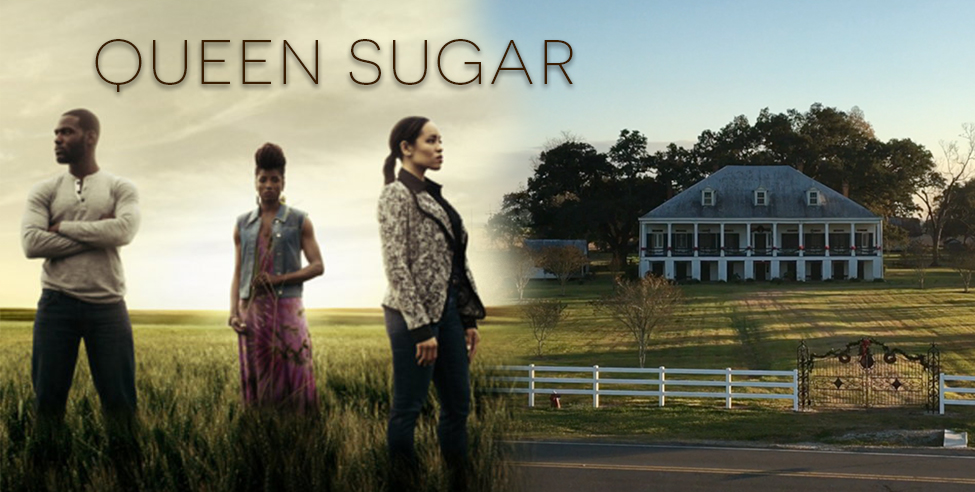
by Alvin Conley, special sections editor & Amber Burton, managing editor
The Struggle to Work // The Thibodaux Massacre

by Rachel Klaus, co-features editor Work in the Bayou Region, just like much of the South, has many roots in slavery. Slaves were often field hands for sugar plantations, doing everything from planting the sugar cane, to plowing the fields, to harvesting and then making the sugar. And neither the work itself or the system for work were easy or pretty. One of the Bayou Region’s most violent examples of working in the shadows of slavery came on Nov. 23, 1887, when nearly 60 unarmed black laborers and their families were killed in Thibodaux by white vigilantes following a three-week sugar cane labor strike, according to John DeSantis in his 2016 book “The Thibodaux Massacre.” The estimated 10,000 laborers from Lafourche and three surrounding parishes went on strike for a livable wage to be paid in U.S. money rather than plantation script that could only be used at an individual, specific plantation store. “What they were paid, was essentially not enough,” DeSantis said. “They wanted a dollar a day and $1.25 a day if they worked through the night. They just did not want to be paid in script anymore.” The strike, in the middle of the harvest season, came after the plantations ignored the laborers’ demands for weeks. “Both sides were in fear and distrustful to one another,” DeSantis said. “A couple of days before the massacre Judge Taylor Beattie ordered a state of martial law so no one could enter or leave town. It made the strikers even more afraid. There were just so many factors that led up to the massacre.” In the end, the shooting lasted for more than 2 hours and killed men, women and children. And the effect on work in the Bayou Region would be the passage of laws by white democrats keeping sugar cane workers from organizing until the 1940s. Sugar cane workers loading mule-drawn cart (undated). Credit: Nicholls State Archives Workers on Laurel Valley rail car (20th century). Credit: Nicholls State Archives Owners of Laurel Valley among others in wagon with two plantation workers standing (20th century). Credit: Nicholls State Archives Worker fertilizing sugar cane at Laurel Valley using a mule-drawn car (1954). Credit: Nicholls State Archives Worker fertilizing sugar cane at Laurel Valley using a mule-drawn car (1954). Credit: Nicholls State Archives Laurel Valley Sugar House after a September 1965 hurricane. Credit: Nicholls State Archives Laurel Valley Plantation house (20th century). Credit: Nicholls State Archives Most likely Laurel Valley Sugar House (20th century). Credit: Nicholls State Archives Men with horse and farm equipment in sugar cane field (20th century). Credit: Nicholls State Archives Previous Next
Work from the Heart // Conley Catering

by Alvin Conley, special sections editor Dishes clinging, food sizzling, and heat refusing to go unnoticed all while the soft R&B music plays in the background could only mean one thing in the Conley household: Grandma’s in the kitchen again. The smells of different meats, vegetables and desserts creep their way out of the kitchen and take over the house. Shortly after, one by one, pots filled with beans and gumbos, pans containing pastas and meats, and trays filled with cakes and cookies make their way to the dining room, where everyone (and their taste buds) gather to prepare for another Diane Conley meal. Located in Houma, Louisiana, Conley Catering owner, Diane Conley, has been running her own catering company for about 10 years. Diane began dibbling and dabbling in the kitchen as a teenager, but really began to take cooking serious in her early 20s. “I knew it had to be a natural talent when people constantly complimented my dishes,” Diane said. Now, over 40 years later, Diane loves to cook as much as when she was younger. In real estate, it’s said that the most important part is location, location, location, and in any culinary related field, Diane said the most important part is presentation, presentation, presentation. “I like for a person to eat with their eyes before tasting a dish and the only way to accomplish that is through presentation,” she said. Houma resident, Pamela Reich said that she loves ordering from the Diane — not only because she’s a local, family-owned business, but because you can see the love and hard work that goes into every dish. “Every year when [Diane] does orders for either Thanksgiving or Christmas I make sure to order food and two sweet potato pies; one for the family dinner and another for myself,” Pamela said. On top of being the owner of a catering company, Diane has been a Full Service Manager at TARC Restaurant & Gift Shop located at 1315 Grand Calliou Road, in Houma, Louisiana for over 24 years. At TARC, which is a facility that trains mentally and physically disabled persons to become independent livers, Diane manages the restaurant, gift shop and cafeteria. Paula Murray, a client of TARC, said that she enjoys working with Diane. Paula, along with the other students/clients of TARC typically work in the restaurant as servers. “Ms. Diane is nice,” said Paula. “She helps us in the restaurant and sometimes we help her cook.” Diane said that the clients help her make things such as salads, and while they no longer do any major cooking, they would often help make fried foods and breakfast items. “Ms. Diane is a good teacher,” Paula added. “She makes sure we know exactly what to do so the food is perfect when we serve it.” With her culinary background being rooted in South Louisiana, Diane said that bread pudding, sweet potato pies, seafood tarts and chicken sausage gumbo are her most frequently requested items, and she personally enjoys making meatloaves and different types of beans. “Know that there’s more to being a culinary cook or chef than cooking,” Diane said. There’s purchasing, preparation and cleaning involved, but if you love it, it’s all worth it.” https://youtu.be/hwbLZ87zL94
A Working History // Laurel Valley
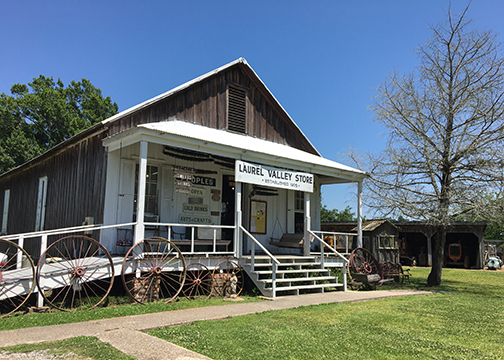
by Rachel Klaus, Co-Features Editor Nestled two miles below the city of Thibodaux is the South’s largest surviving sugar plantation complex, Laurel Valley. This beautiful southern plantation is the home to animals, and a workplace for local volunteers. Danny Foret has been volunteering at the Laurel Valley Village for almost 15 years. What started out to be a once-a-month job turned into being an everyday job since he retired. He runs the museum, spring and fall festivals and tends to the animals. “I enjoy it and it gives me something to do,” he says. “This is the kind of place that you can be as busy as you want. Sometimes I am either tied down doing things inside or I am doing stuff outside.” In the early 1800s, slaves that resided on the plantation built their own homes out of the area’s cypress wood. More than 60 cabins are still standing on the land today. In 1905 it was recorded that there were 150 cabins still standing, but some were lost in hurricanes or have been condemned. Foret says the cabins, and the history of it are why people are so amazed when they come to visit the plantation. In fact, people come from all over the world to visit Laurel Valley. “I think it is because of its historical significance, he says. “People like to take a look in to the past and see how things were back in the day. The furthest I think someone has travelled to see the plantation was from Australia. We’ve had people all over the world like China, India, European countries, South America and even Africa.” Some people like to come and learn about the ghost stories that have been told on the grounds. Most plantations in the South have some kind of supernatural appearance, and Laurel Valley is not any different. “A policeman told me once that he saw a little girl on a bicycle as he was driving through the village and all of a sudden she disappeared right in front of him,” Foret says. “Another person said they saw a prisoner chain gang in striped jump suits cross the road and they disappeared in the cane field. Some people tell me they see people in the windows of the old houses and some see a woman in a rocking chair on the front porch. However, I’ve never seen them, nor have I really looked for them.” One of Foret’s main jobs is to take care of the animals that reside there. Animals of all types and breeds. Chickens, cats, goats, pigeons, peacocks, guinea pigs, pigs and ducks. There is one animal in particular that he has grown very fond of, a cat named Miss Kitty that he likes to call “My Girl.” Miss Kitty was dropped off a few years ago and has since made the Laurel Valley store her home. She roams the store and front porch everyday while keeping Foret and visitors entertained. He says while stroking her soft grey fur, “We have had as many as 35 cats that were dropped off here. We were fortunate that we have found a home for all of them. I kept Miss Kitty because she just has something special. She is very sweet and guests love her. Kids come over just to play with her.” Part of what makes this village so unique is the animals. Some visit just to see all of the animals. What is interesting, however is how the village began to take care of the different varieties of animals. It started when Foret bought 25 chickens nine years ago. Since then locals kept bringing more and more animals for him to take care of. “People just keep dropping the animals off. Almost every animal we have someone has dropped off. I just can’t say no. I feel like I have to take care of them or find a good home for them. ” Each animal has a name, except for the chickens because there are so many. The pigs are named “Steve,” “Fat Boy” and “Bacon.” Foret says Steve and Fat Boy were once 4-H projects and Bacon was born a house pig. “The owners of Bacon were given an ultimatum. It was either them or the pig. Otherwise they would have to move out of their trailer.” Before volunteering at Laurel Valley, Foret worked at Texaco for 33 years. He says after he retired he grew tired of fishing. “I retired 15 years ago and I fished the first two years of my retirement. I fished for five days a week and then I got tired of it. I picked up my fishing lines and started volunteering here.” Laurel Valley became a “village” in 1978. It was incorporated as a non-profit group’s charged with the direct purpose of directing and restoring the grounds. The store/museum was built in 1906 and boasts old farm equipment and other memorabilia from the 19th and 20th centuries. It also features crafts and arts made by locals. Foret even sells his own crafts and art. His photographs are for sale, ranging from $10 to $70. He also built wooden models that remind him of the plantation. Models like pirogues, churches and even an outhouse. His wooden figures he says aren’t for sale, but it flatters him when people ask to buy them. “Sometimes I have a lot of time on my hands. I like to do things to occupy my time. I built the Laurel Valley Church last summer. It took three months to build. I thought it was neat because it has a unique steeple. The church’s steeple does not have a triangular top; its rectangular instead.” Other crafts in the store are from local vendors. Earrings, photographs, books, baby bonnets, Cajun signs and old stationary can be purchased. All of the profits made in the store go straight to the upkeep and restoration of the plantation. Laurel Valley was built around 1790 by Frenchman Etienne Boudreaux who
